15 Types of Poplar Trees (With Pictures)
-
Kristin Hitchcock
- Last updated:
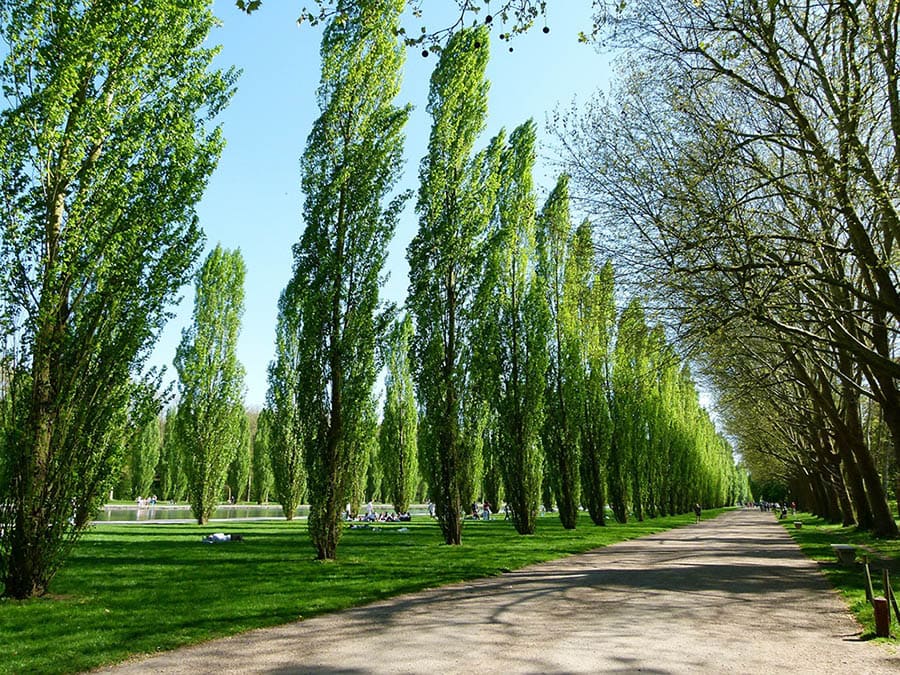
Poplar trees are rapid-growing trees that are common in northern temperate regions, though they have a short lifespan. They are related to the willow tree and have relatively softwood with oval or heart-shaped leaves.
They are easy trees to care for that only require minimal watering during dry weather and annual pruning. There are many types of poplar trees, so if you want to plant poplars on your property, you’ll want to identify which kinds to choose from. In this article, we’ll look at the various types of poplar trees, which should help you decide what would look best in your landscape.
The 15 Types of Poplar Trees
1. White Poplar
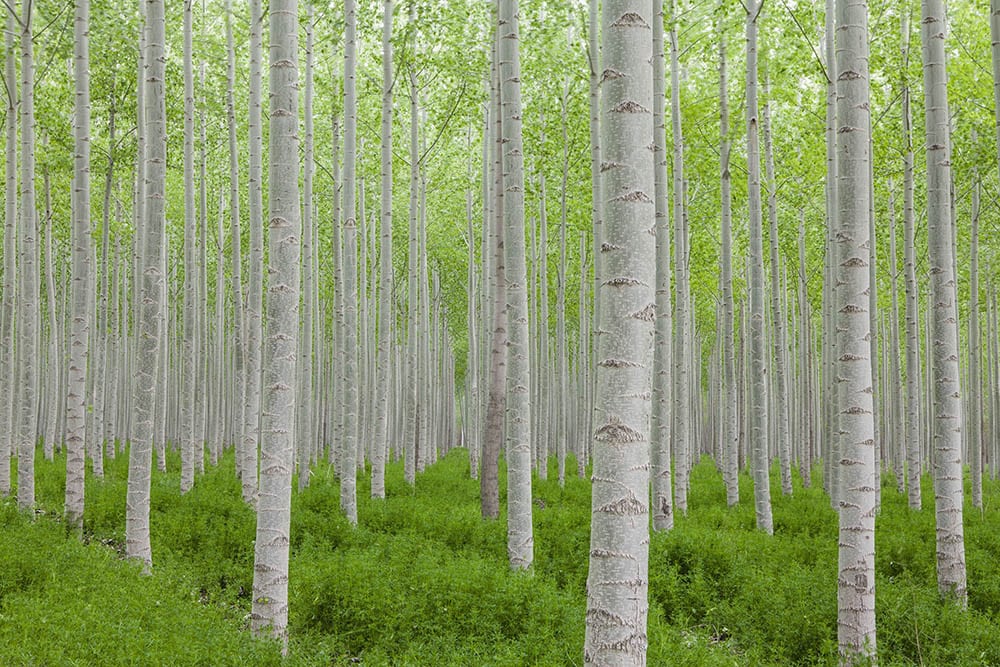
The white poplar is a type of poplar tree also called the silver poplar. It is the most closely related to the aspen species and grows 60 to 100 feet tall. Though it is a short-lived tree, it is great at providing shade and has large dark leaves. The leaves have a fuzzy white underside, which gives this tree its white or silver appearance.
2. Populus Heterophylla
The Populus heterophylla poplar tree is a tree that can grow in very wet locations that other trees cannot survive in. The leaves are oval-shaped and can be dark or light green with a different colored underside. This tree can reach 50 to 100 feet tall at maturity and acquire a more lumpy and dark-colored bark with age. It is also referred to as the swamp cottonwood since it thrives in wet and swampy areas.
3. Balsam Poplar
Balsam poplars are one of the more popular poplar trees commonly found across the Northern U.S. It is most widely recognized for its shiny, oval-shaped leaves with resin-dotted undersides. The Balsam reaches a height of 75 to 100 feet once it reaches full maturity. Balsam wood is often used to make pulpwood, particleboard, and boxes.
4. Populus Nigra
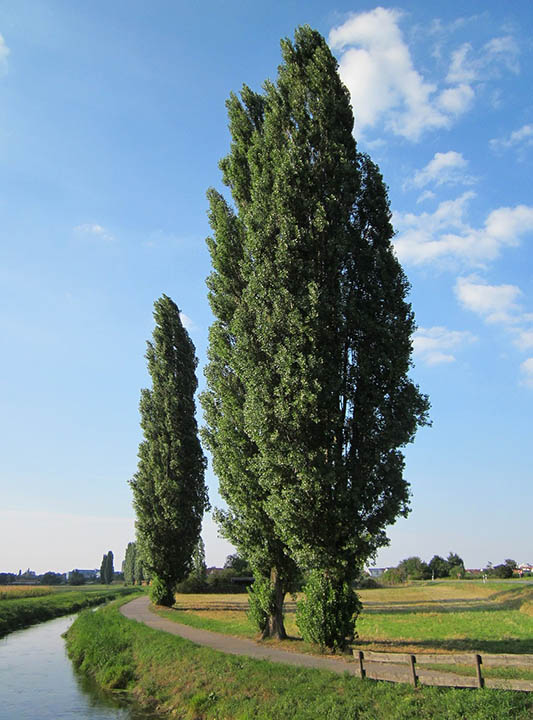
Populus nigra is a species of cottonwood poplar, also referred to as a Black Poplar. This tree generally grows at a rate of 6 feet per year and can grow to be 40 to 60 feet tall at maturity. It spreads by seed and is considered to be an invasive species in certain parts of the U.S. It cannot survive in sandy or salty soil or in areas that are dry or prone to experiencing droughts.
5. Populus Simonii
The Populus simonii is a poplar tree native to Northeast China and Mongolia. It is commonly planted in cooler places, and the wood is often used to make inexpensive lumber. This tree can withstand droughts or dry climates and has a fast-growing speed. It is an ideal windbreak tree and is often planted with other poplars.
6. Populus Lasiocarpa
The Populus lasiocarpa tree is native to the humid forests of China, giving it the nickname of Chinese necklace poplar. This medium-sized tree is very sensitive to the changes in the soil as it needs nutritionally dense and wet soil at all times. It is also very vulnerable to wind, making it best for areas with minimal wind or planted among other trees for support. Despite being sensitive to wind, it is relatively good at withstanding cold winters and frost.
7. Laurel-Leaf Poplar
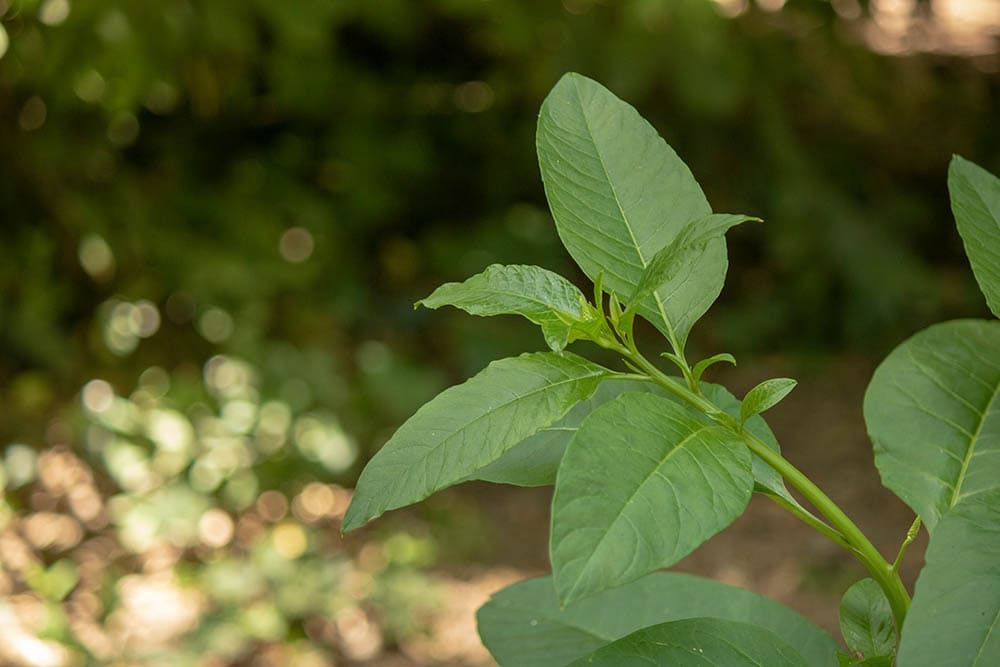
The laurel-leaf poplar is a flowering type that produces spikes of cup-shaped flowers in April and May. This tree is very hearty and can withstand cold drops of temperature during the winter. It needs moist soil and does best in sunny areas. It grows to be 40 to 70 feet high at maturity.
8. Populus Ciliata
Populus ciliata, or the Himalayan poplar, is a type of poplar tree with broad and furry leaves with a serrated edge. The trunk of a young ciliata tree is smooth and green but turns brown with vertical cracks as it ages. It blooms bell-shaped flowers that are either male or female, with the female flowers containing 100 to 150 seeds on average. The wood of this tree is regularly used to make boxes, coaches, and pieces of furniture.
9. Populus Wilsonii
Populus wilsonii is a poplar tree found in many Chinese provinces. They can grow up to 80 feet in height at maturity and have heart-shaped leaves with sharp tips. This tree is difficult to raise from cuttings, producing yellow-green flowers in April. It prefers sandy or clay-based soil and can withstand severe drops in temperature as well as frost. It is not very wind resistant and is usually used as decorative trees in avenues or streets.
10. Populus Euphratica
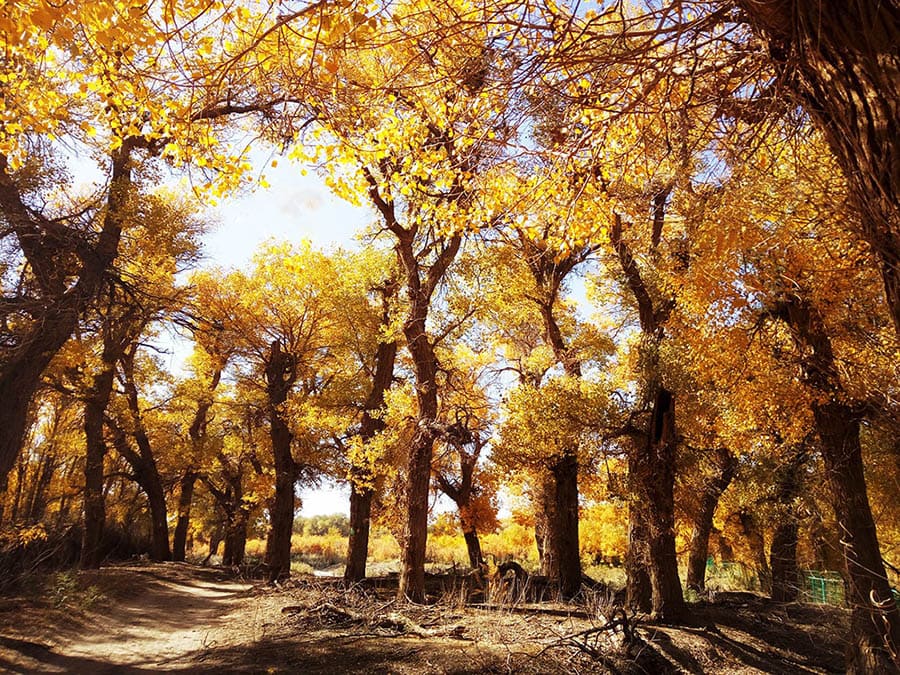
The Populus euphratica tree is best known as the desert poplar, as it thrives in dry and hot climates. It has long, pale green leaves that are often differently shaped, and its roots grow far outward but not deeply in the ground. This poplar is often bent and misshapen and is used to provide breaks in the wind over relatively flat terrains. It is sometimes used for wood fiber or papermaking.
11. Canadian Poplar

The Canadian poplar is a tree native to the Northeastern and North-Central United States and Southeastern Canada. It has an average lifespan of 50 years and is very fast-growing. This poplar has soft and fibrous wood, making it ideal for wood pulp and particle board making. The leaves are often bluish-green and teardrop-shaped with sharply serrated edges.
12. Populus Tremula
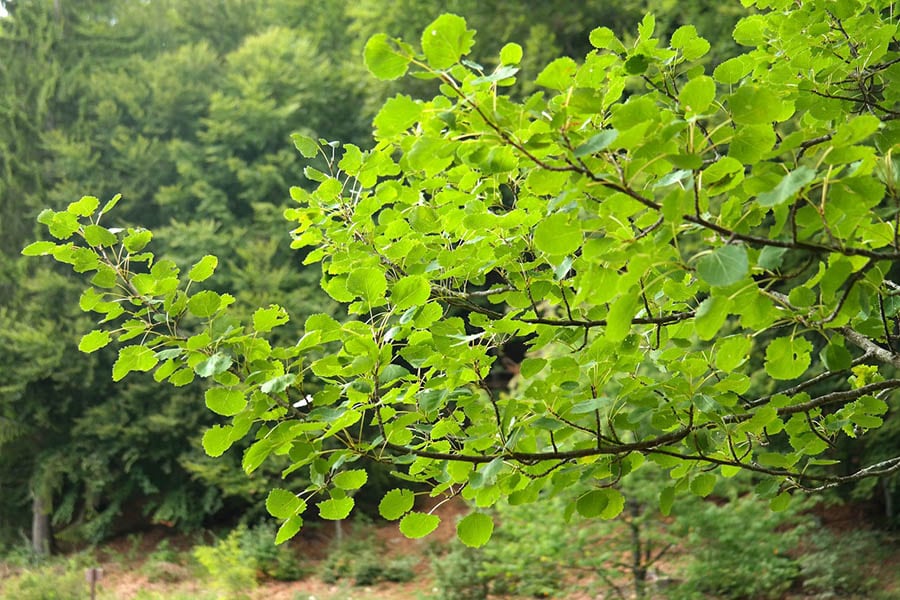
Populus tremula is a poplar species accustomed to cooler temperatures. It is native to Asia and Europe, among many other cooler locations. It can grow to be a startling 130 feet tall with green bark when young, which slowly becomes rougher and darker with maturity. Its roots grow very far outwards and in tight coils, making it a very hard tree to remove. The softwood of the Populus tremula is often used to make cheap lumber or to make writing paper and other types of particleboard.
13. California Poplar
The California poplar, or western balsam-poplar, is notable as a model organism in plant biology. It has heart or oval-shaped leaves, and the buds produce a balsam scent when they open in spring. The bark of the California poplar is so hard and gnarled that it can cause sparks when cut with a chainsaw. It can grow on deep slopes since it has an extensive root network, which can damage land and buildings. It does best with wet soil and sunlight but can survive many types of climates.
14. Populus Tremuloides
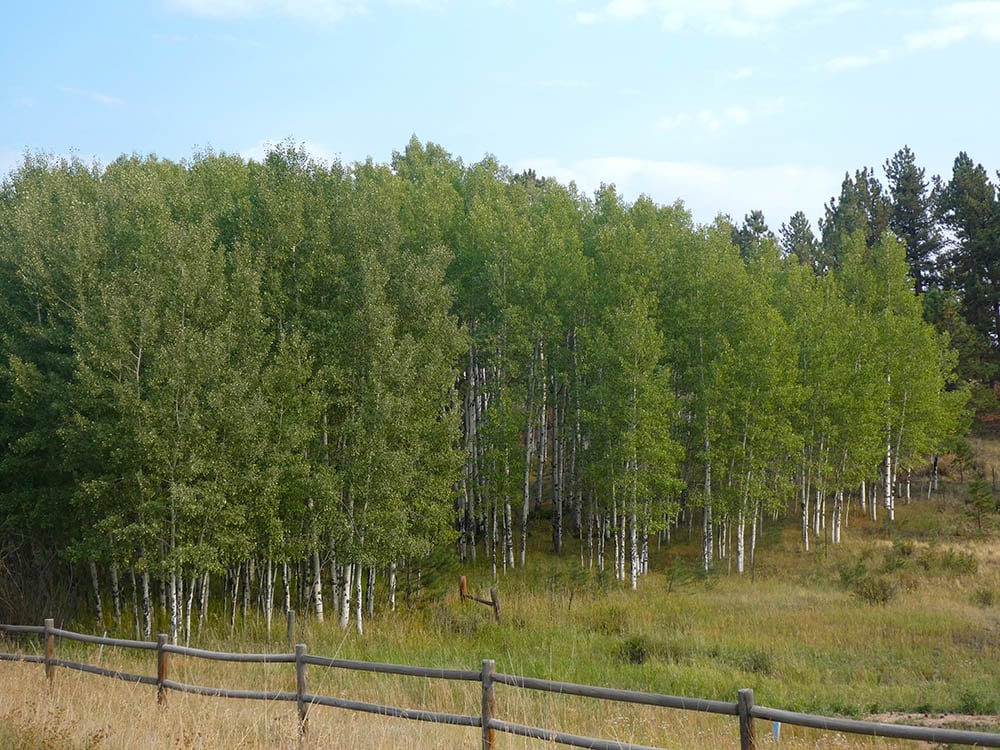
Populus tremuloides is a poplar tree native to the cool areas of North America. This is a fast-growing tree that usually reaches a height of 20 to 60 feet tall. It can be found in wet forest openings, meadows, and gravelly prairies. It gets its name because it is vulnerable to wind, making it quake and tremble in any forceful wind. It is recognized for its beautiful white bark and deep, green-colored leaves.
15. Populus Angustifolia
Populus angustifolia is closely related to the willow tree species. It is widely known for its ability to grow in the mountains and surrounding plains. The mature height of this tree is 40 to 60 feet tall, and it needs full sunlight to thrive. The tree, as a whole, is oval-shaped with slim branches and long willow-like leaves. The leaves will transform from green to a rich yellow color during fall.
Wrapping It Up
As you can see, there is a wide variety of poplars, which all have unique needs and benefits. Some poplars can grow in just about any climate, whether you want a sturdy tree to protect your home or small decorative trees for your lawn. Many are fast-growing and have a life expectancy of at least 50 years. This makes them excellent trees for beginners since they don’t require much care after planting.
Featured Image Credit: Pixabay
Contents
